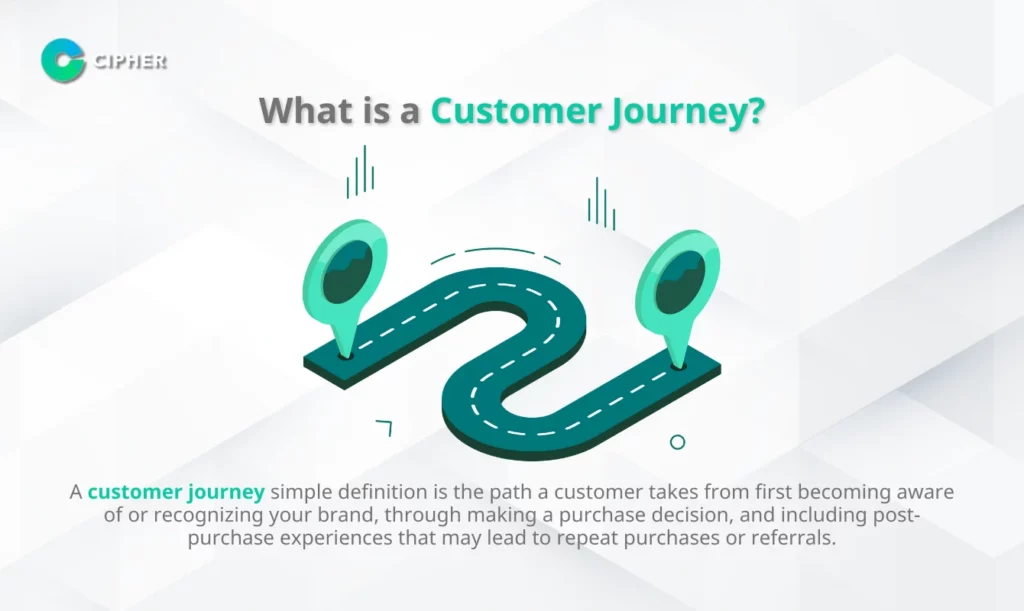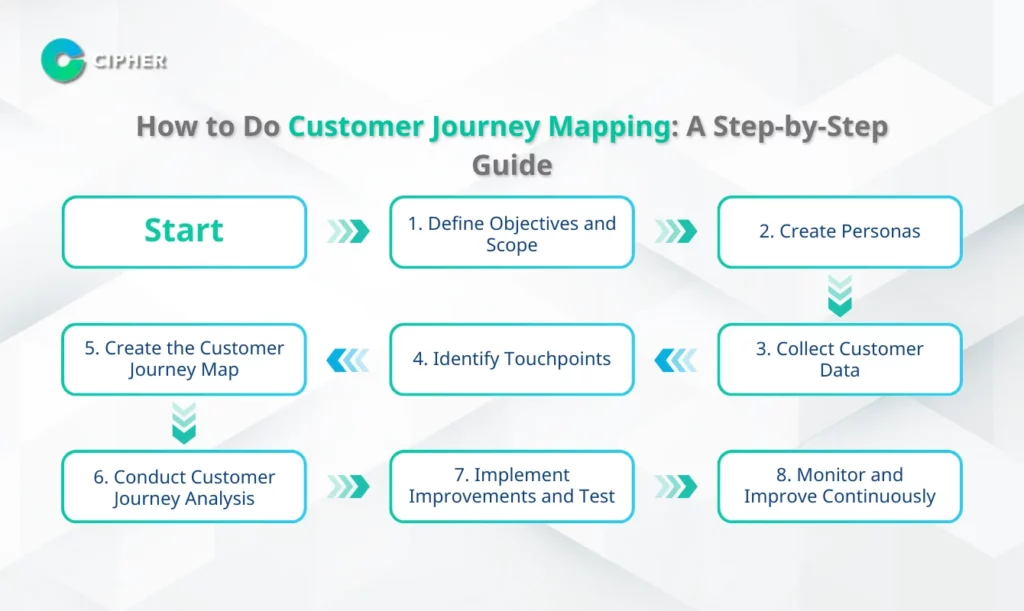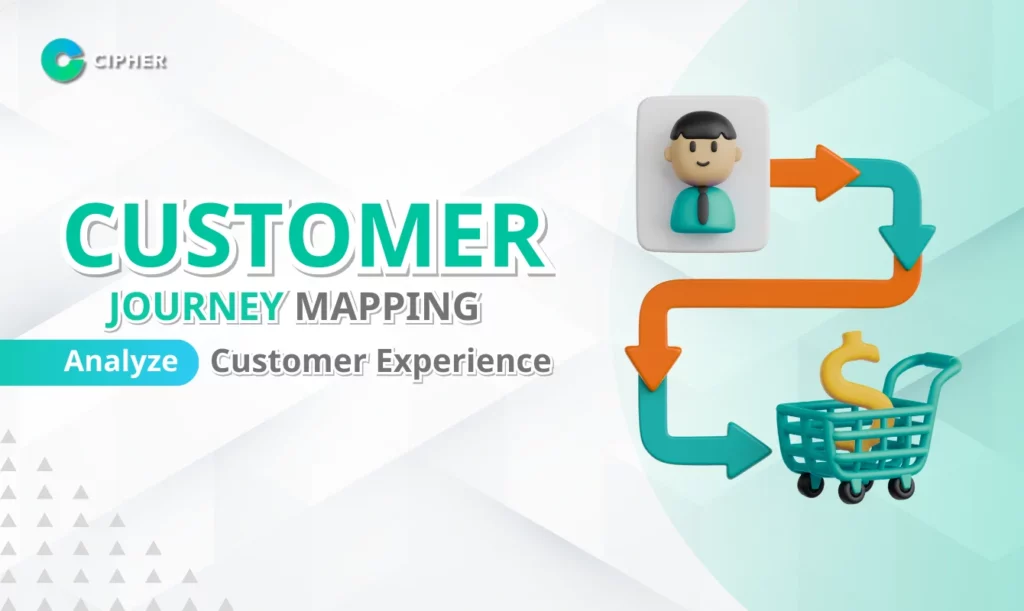Table of Contents
In an era where digital marketing plays a crucial role, deeply understanding customers is no longer a simple task. Complex consumer behaviors and multiple channels through which they interact with brands have forced businesses to adapt and view the customer journey more comprehensively. Customer Journey Mapping is an essential tool that helps businesses understand the path and experiences of their customers completely. This article will explore what is a customer journey mapping, how to implement a customer journey simple approach, and why it’s crucial for journey digital marketing success. We’ll also provide a detailed guide on how to do customer journey mapping effectively to transform your business strategy.
For businesses looking to enhance their digital presence, understanding the customer journey is just as important as selecting the right tools like an Enterprise CMS for your website management or implementing effective social media management strategies.
What is a Customer Journey?

A customer journey simple definition is the path a customer takes from first becoming aware of or recognizing your brand, through making a purchase decision, and including post-purchase experiences that may lead to repeat purchases or referrals. If we define it clearly, Customer Journey means “the customer’s path,” which is a key concept in modern journey digital marketing. Understanding this journey is the first step before diving into the customer journey mapping process.
In reality, the customer’s path is no longer linear but a complex and unstructured process. Customers may move in and out of different brands, alternating between advertisements, seminars, social media, websites, emails, blogs, and other channels before making a purchase decision. Analyzing the Customer Journey Map is therefore necessary for businesses of all sizes.
The Importance of Customer Journey
Understanding the Customer Journey is important for businesses in several ways:
- Understanding customer behavior: Helps understand how customers interact with the brand across different channels
- Improving customer experience: Enables the enhancement of customer experience at each touchpoint
- Planning marketing strategies: Supports effective marketing strategy planning
- Increasing loyalty: Creates satisfaction and good experiences for customers, leading to repeat purchases
A Forbes report states that over 86% of buyers are willing to pay higher prices for better experiences. Conversely, 1 in 3 customers choose to stop buying from a favorite brand after a bad experience. Creating a complete Customer Journey is therefore a crucial part of modern Digital Marketing.
The 5 Stages of the Traditional Customer Journey
The traditional customer journey consists of 5 main stages:
1. Awareness
In the first stage, customers begin to know your brand or product through various channels such as:
- Online and offline advertising
- Social media
- Public relations
- Events and activities
Creating effective awareness is the first step in attracting customer attention. The key is creating interesting content with unique, memorable characteristics. Good social media management helps increase brand awareness effectively. For businesses looking to maximize their reach, implementing targeted social media marketing campaigns can significantly boost this awareness phase.
2. Consideration
At this stage, customers compare options and search for additional information to help with their purchase decision. Activities at this stage include:
- Reading product details
- Looking at reviews from other customers
- Comparing with competitors
- Asking information from sales staff
Providing clear and valuable information will help customers make decisions, including presenting solutions that address customer pain points. Many successful businesses implement a CRM system at this stage to better track and respond to customer inquiries and preferences.
3. Purchase
When it comes to the purchase stage, customers have decided to choose a product or service and make an actual purchase. This stage includes:
- Registration
- Payment
- Receiving the product or service
Making the buying process smooth and convenient across purchasing channels, whether online or in-store, will increase customer satisfaction.
4. Retention
At this stage, customers return to use the product or service again. Factors affecting repeat purchases include:
- Satisfaction with the product or service
- Post-sale experiences, such as warranties and customer service
- Continuous customer care
- Promotions or special privileges for existing customers
Creating good experiences and services that match individual customer interests will help keep customers satisfied and returning.
5. Advocacy
The final stage is when satisfied customers recommend your brand to others through:
- Word-of-mouth recommendations
- Product or service reviews on various platforms
- Sharing experiences on social media
Creating outstanding experiences will encourage customers to become advocates for your brand.
5A Theory: The New Customer Journey Model
Dr. Philip Kotler developed the 5A theory that updates the Customer Journey stages to better align with customer behavior in the digital age, consisting of:
- Aware (Awareness) – Customers begin to know the brand through marketing and advertising
- Appeal (Attraction) – Customers feel interested and attracted to what the brand offers
- Ask (Inquiry) – Customers search for more information about products or services
- Act (Action) – Customers decide to buy and proceed with the purchase
- Advocate (Referral) – Satisfied customers recommend the brand to others
This 5A theory adds the stages of appealing (Appeal) and asking (Ask) as important steps in the new Customer Journey process.
What is a Customer Journey Map?
What is a customer journey mapping exactly? A Customer Journey Map is a visual representation of a customer’s overall experience with your brand, product, or service, in chronological order, identifying interactions at all touchpoints throughout the customer’s journey. Creating a Customer Journey Map is a process that helps businesses systematically analyze and understand the customer experience. Effective customer journey analysis through mapping gives businesses invaluable insights for optimizing every interaction.
Many businesses may wonder what a Customer Journey Map example looks like. Generally, this map shows the various stages customers go through, the feelings that arise, and the points of interaction with the brand in an easily understandable format. You can see more examples in the Guide to Customer Journey Mapping for a deeper understanding.
A Customer Journey Map helps businesses:
- Understand the customer’s perspective
- Identify problems and opportunities for improvement
- Create good experiences for customers at all touchpoints
- Develop effective marketing and sales strategies
Components of a Customer Journey Map
A complete customer journey map should include the following key components:
- Phase (Customer sequence and information) – The various stages in the customer’s journey
- Action (Customer actions) – What customers do at each stage
- Touchpoint – Channels through which customers interact with the brand
- Timeline – Timeframe of the journey
- Persona (Target group characteristics) – Details of the target customer group
- Thoughts (Customer thoughts) – What customers think at each stage
- Emotional Experience – Customer satisfaction or disappointment
- Pain Point (Customer problems) – Obstacles or challenges customers face
- Solutions – Approaches to solving customer problems
- Stakeholder/Ownership – Departments responsible for each part
How to Do Customer Journey Mapping: A Step-by-Step Guide

1. Define Objectives and Scope
Start by setting clear business goals and scope, such as:
- Analyzing the online shopping experience
- Improving after-sales service
- Increasing customer repeat purchase rates
The Customer Journey Mapping process begins with a clear goal of which part of the customer journey you want to study.
2. Create Personas
A Persona is a profile created to represent the target customer group, gathering information about:
- Demographic data (age, gender, income, education)
- Buying behavior
- Interests and preferences
- Goals and needs
- Factors affecting purchase decisions
Personas help gain deep customer understanding and design strategies that match the needs of specific groups.
3. Collect Customer Data
Use various methods to gather in-depth information about customers, such as:
- Surveys and questionnaires
- Customer interviews
- Analysis of data from websites and applications
- Collection of customer opinions and reviews
The data collected should cover customer experiences at all touchpoints with the brand.
4. Identify Touchpoints
Identify all points where customers will interact with the brand, such as:
- Website
- Social media
- Stores
- Sales staff
- After-sales service
Also identify the time spent and the feelings customers have toward the brand at each point.
5. Create the Customer Journey Map
Use the collected information to create a map showing:
- Various stages customers go through
- Touchpoints at each stage
- Customer feelings and experiences
- Problems customers encounter
6. Conduct Customer Journey Analysis
Perform thorough customer journey analysis to:
- Identify points where customers experience problems or dissatisfaction
- Find opportunities to improve customer experience
- Identify gaps between customer expectations and what the brand delivers
- Discover insights that can transform your journey digital marketing approach
7. Implement Improvements and Test
Use the information from the analysis to:
- Improve problematic touchpoints
- Develop new strategies and processes
- Test changes and evaluate results
Implementing CRM systems at this stage will make improvements more effective because it will provide complete and systematic customer information. Analyzing data from CRM will lead to a clearer understanding of customer needs and behaviors.
8. Monitor and Improve Continuously
A Customer Journey Map is not a one-time document but should:
- Continuously monitor improvement results
- Collect new information to improve the Journey Map
- Continuously develop the customer experience
Differences Between Persona and Customer Journey Map
Although Persona and Customer Journey Map are tools often used together, there are important differences:
Persona focuses on:
- Understanding the characteristics and needs of the target customer group
- Knowing customers in depth
- Designing strategies that match the needs of the target group
Customer Journey Map focuses on:
- Showing the customer’s journey from awareness to purchase decision and referral
- Seeing an overview of the customer’s experience throughout the journey
- Identifying points for improvement at each stage of the journey
Persona helps understand “who the customer is” while Customer Journey Map helps understand “what experiences the customer goes through.”
Benefits of Customer Journey Maps
Using Customer Journey Maps has several benefits:
- Understanding customers: Helps understand customer behavior, needs, and expectations
- Identifying improvement points: Helps find points where customers experience problems or dissatisfaction
- Developing marketing strategies: Supports planning marketing strategies that meet customer needs
- Increasing collaboration within the organization: Helps all departments in the organization understand customers together
- Improving customer experience: Leads to better experiences at all touchpoints
- Increasing repeat purchase rates: Improving customer experience will lead to loyalty and repeat purchases
- Creating competitive advantage: Businesses that understand customers better will have an advantage in competition
Techniques for Effective Customer Journey Mapping
To maximize the benefits of Customer Journey Mapping, consider the following techniques:
- Focus on the customer’s perspective: Consider the journey from the customer’s perspective, not the business’s perspective
- Use real data: Don’t assume or guess; use data from actual customer research
- Make it visual: Create maps in an easy-to-understand and clearly visible format
- Involve all departments: Involve all departments in the organization in creating and using the Journey Map
- Improve continuously: Regularly update the Journey Map to align with changing customer behavior
Customer Journey Mapping Services from Cipher
For businesses looking to develop a Customer Journey Map but lacking experience or sufficient resources, we offer comprehensive Customer Journey Mapping services, including:
- Customer data analysis: Analyzing customer data to understand behavior and needs
- Persona creation: Developing Personas that reflect the characteristics of target customer groups
- Customer Journey Map creation: Designing customer journey maps covering all touchpoints
- Analysis of areas for improvement: Identifying points for improvement and development opportunities
- Improvement recommendations: Suggesting strategies and approaches to improve customer experience
- Monitoring and evaluation: Tracking improvement results and assessing success
- Training and education: Training teams to understand and use Customer Journey Maps effectively
- MarTech system development: Providing consultation and assistance in installing MarTech tools to collect data and analyze Customer Journeys
With services covering everything from data analysis to improving customer experience, we help your business better understand customers and develop strategies that truly address customer needs.
Applying Customer Journey Maps in Real Business
1. Product Development
Use information from Customer Journey Maps to:
- Identify the true needs of customers
- Develop products that address customer pain points
- Improve product features to meet expectations
2. Improving Customer Experience
Use Customer Journey Maps to:
- Improve problematic touchpoints
- Create continuous and seamless experiences
- Develop customer service that meets needs
3. Journey Digital Marketing Strategy
Use information from Customer Journey Maps to enhance your journey digital marketing strategy by:
- Developing content that meets customer needs at each stage
- Selecting appropriate communication channels
- Planning effective marketing campaigns
- Creating personalized touchpoints based on customer journey analysis
An effective customer journey strategy should be integrated with your overall marketing mix to ensure consistency across all elements of your marketing efforts.
4. Employee Training
Use Customer Journey Maps for:
- Educating employees about customer needs
- Developing service skills that meet customer expectations
- Creating a shared understanding of service goals
5. Managing Websites and Digital Systems
For businesses looking to improve digital systems, choosing an appropriate Enterprise CMS will help manage content and customer experience more effectively. Information from Customer Journey Maps will help design website structures and content that address customer needs at each stage of the journey. Learn more about comparing different Enterprise CMS platforms to find the right solution for your business needs.
Conclusion
Customer Journey Mapping is an essential tool for analyzing and deeply understanding customer experiences in today’s competitive marketplace. When done correctly, it helps businesses to:
- Clearly understand customer needs and expectations
- Identify points for improvement and development in the customer’s journey
- Create impressive experiences for customers at all touchpoints
- Increase satisfaction, loyalty, and referrals
Even adopting a customer journey simple approach can yield powerful insights. The process customers go through from knowing the brand to making purchase decisions and referrals is complex, and a well-designed journey map helps visualize this process clearly.
In the digital age, where consumer behavior changes rapidly, mastering how to do customer journey mapping and implementing continuous customer journey analysis is necessary for every business that wants to thrive in journey digital marketing and grow sustainably.
If you’re looking for comprehensive digital marketing solutions that incorporate customer journey mapping and other essential strategies, visit Cipher – your partner for complete digital marketing services.
Frequently Asked Questions
How to do customer journey mapping effectively?
The essential steps to create and analyze a Customer Journey Map are:
- Find appropriate customer goals that align with your business objectives
- Identify interaction points with customers through all communications in the Customer Journey
- Recognize customer problems and satisfaction through comprehensive customer journey analysis
- Experience the Customer Journey yourself to gain firsthand insights
- Implement a customer journey simple approach for teams new to the concept
What are examples of Customer Journey analysis?
Examples of Customer Journey analysis:
- Target audience uses Facebook
- User sees product images appear on News Feed through your Facebook ads
- Target audience becomes interested in the Whey Protein product
- User decides to click on the image and read the caption to see all product information
- User reads additional product reviews on the Facebook Page to verify product quality
What is the difference between a Customer Journey Map and a Persona?
What does a User Journey Map include?
Steps in creating a User Journey Map:
- Define scenario and user expectations
- Create a list of touchpoints
- Take user intention into account
- Sketch the journey





